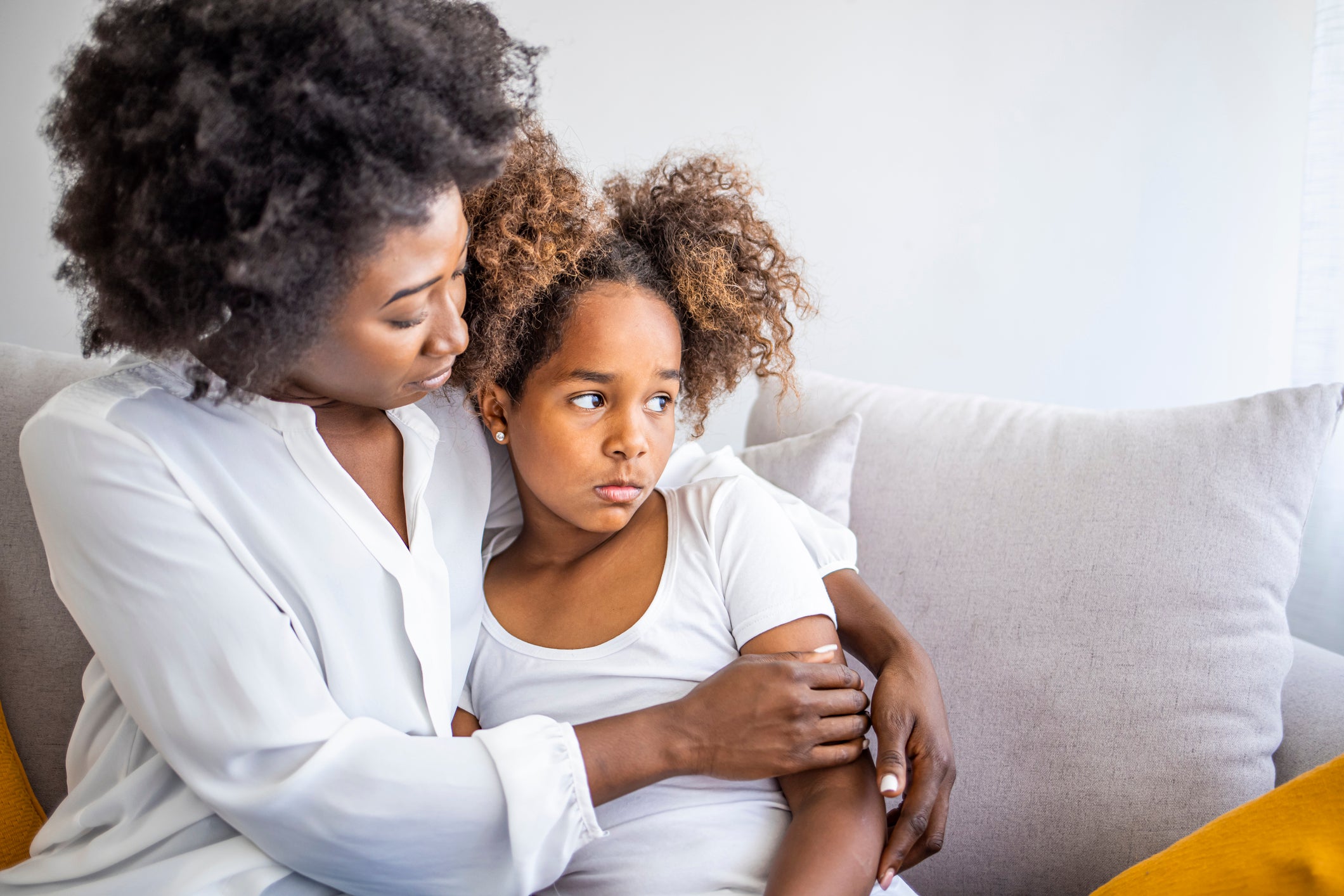
In my household growing up, there was a lot of yelling, some spanking with thick leather belts, and very little freedom of speech. It made me feel on edge, caged, and often frightful if I’m being completely honest. There were also no safe spaces for me to express my feelings and nobody to validate them.
I understand now that my parents didn’t have the knowledge that has been made available to me as a parent and they were doing the best they could with the tools they had. I, on the other hand, live in an age where I can follow a therapist on Instagram, partake in online therapy, or use Google to learn about mental health. So, since I have that privilege, I think it’s important that I pass my knowledge down to my son and help him prioritize his mental health.
If you’re mmm-ing and ahh-ing at what I’m saying, perhaps you want to do the same but aren’t sure how. ESSENCE spoke to a few mental health professionals who work with kids to find out what tools they recommend to help mentally nourish your little ones.
Encourage Free Expression
Part of healthy mental health is having the freedom to be yourself completely. That means showing the good, bad and downright ugly while still being able to love and accept yourself. As parents, you have the honor of teaching your kids how to do this from a young age. Encouraging free expression is one way to go about it according to Roxanne Francis, psychotherapist and CEO of Francis Psychotherapy. She recommends giving your kids language to describe whatever emotion they’re feeling.
“Young children usually use words like ‘happy,’ ‘mad’ or ‘sad,'” she says. “In the moment when children are upset or crying, you can give them the right words. ‘It sounds like you’re feeling pretty disappointed/anxious/worried/scared/frustrated right now.’ In happier moments, you can use words like proud or excited.”
It’s also critical that you reinforce that every emotion is valid. As a child and adult, I felt so much shame around anger, so that validation is key. Francis reiterates this point.
“Some children feel guilty for feeling sad. Help them understand that there is a whole range of emotions, just like there are multiple different ice cream flavors, and that we are meant to feel them all,” she says.
Ask Them What They Need
Once your child feels comfortable expressing big emotions, you can take it a step further by asking them what they need to navigate those emotions. Dr. Raquel Martin, a licensed clinical psychologist, suggests giving them options like a snack, physical safe space at home, water, or a trip to the school counselor. Martin also recommends trying breathing exercises.
“[They] are an amazing technique because they can be done absolutely anywhere and truly do help,” she says. “It’s even better if you do the breathing exercise with them so that they can help regulate the parent’s emotions.”
A practical suggestion Martin also offers is creating a “coping box” for your kids.
“This is a fun activity I do with children where we decorate a shoe box with positive words and images and put things in it that helps them to calm down or puts them in a good mood like funny pictures, aromatherapy spray, positive statements, coloring books, and things like that,” she says.”
This is a technique you can use while on daily outings or during travel.
“I have also worked with some patients to make a travel coping box,” she adds. “We typically use a makeup bag, and parents keep it with them to help their kiddos on the go.”
Play More
When you’re stepping on Legos, trying to meet a deadline, drowning in a pile of laundry, and your child is acting out, playing probably isn’t your first thought. However, Simone Guillet, licensed clinical social worker, psychotherapist, and founder of Beyond Balance Counseling Solutions says it’s a good way for kids to relieve stress and embrace fun times. You may be surprised that playing ends up being a stress reliever when you’re on edge too.
“Using stress balls, pop-it toys, and any other sensory toys helps relieve stress, anxiety, and tension,” she says. “Play can be used to communicate how they feel and be used as a positive distraction.”
The CEO also recommends using music, movement and journaling to self-regulate and connect with who they are.
Model Healthy Behaviors
As a parent, you know kids are always watching, whether it’s while you’re using the bathroom or managing a stressful situation.
“When you are feeling overwhelmed or stressed, it helps to say it out loud, then say what you are going to do to help yourself feel better,” Francis says. “‘I’m feeling stressed right now because I need to leave but I can’t find my keys and I’m worried that I am going to be late. But I can take a deep breath to calm down and start retracing my steps to find the keys. I can also send a text to let others know that I might be 10 minutes late.'”
This isn’t always easy to do, especially when you’re only just learning to use healthy coping mechanisms yourself. Don’t feel pressure to be perfect. Just be patient with yourself and honest with your kids. That means when you do lose it, apologize and use your mistake as a teachable moment. Also, remember, developing healthy mental health is a marathon, not a sprint.
